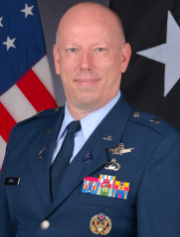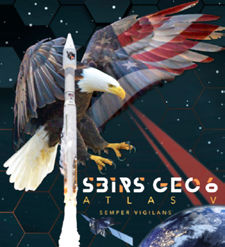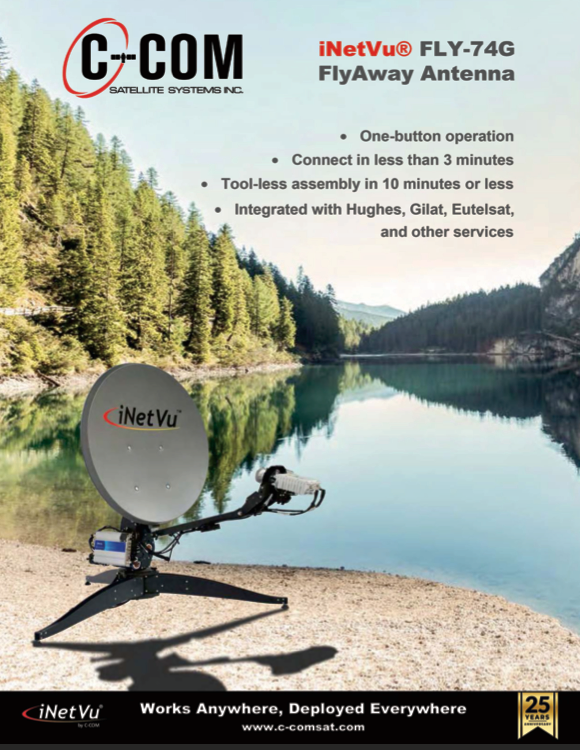“Culture, Process, Technology — Each must advance more rapidly to meet the threat and the growing launch demand.
Space Systems Command’s (SSC) Assured Access to Space Enterprise oversees rapidly Expanding spaceports and ranges, dramatically increasing the launch tempo, new spaceport strategy and alliances, and nascent on-orbit maneuver and logistics for USSF.
Brigadier General Stephen G. Purdy’s role with SSC is unique: he is “quad hatted,” serving as Program Executive Officer for Assured Access to Space (AATS); Commander, Space Launch Delta 45; Director of Launch and Range Operations, Space Systems Command (i.e., the “SSC/S3”); and Director of the Eastern Range. He is located at Patrick Space Force Base, Florida, however, the 10,000 person enterprise ranges across Florida, California, Colorado, New Mexico, Arizona, Utah and Ascension Island. General Purdy also serves as the Space Force University Partnership Program Champion for the University of Texas at Austin.
Recently, the General offered to engage in a wideranging interview that covers everything from reusability of boosters to orbital space debris to gaming.
We used to simply refer to “launch.” Please explain to us Assured Access to Space.

Brigadier General
Stephen G. Purdy
General Purdy
Launch remains critically important. We must get our nation’s most needed satellites into orbit to support the warfighter. Our traditional launch program offices do amazing work to keep the launch pace going. However, to do the launch mission, you also need ranges and bases, and for the first time, all these elements are now unified in one organization. From a bigger perspective, however, the mission area we’re responsible for in AATS is literally experiencing a transformational shift almost overnight. Assumptions we made even less than a year ago are no longer valid, given the pace of change in the commercial market. That means we’re standing up the broader Space Mobility mission area (Space Access, Maneuver and Logistics) for the Service.
As we continue to advance USSF’s Chief of Space Operations ’ Range of the Future” vision, we’re transforming our launch bases at Cape Canaveral and Vandenberg into dynamic spaceports that are modeled after today’s air and sea ports, rapidly expanding our ability to accommodate launch operations as we posture for the three to four hundred launches per year that we see on the horizon. We’re also standing up a formal program of record for the Maneuver and Logistics capabilities I mentioned. General Raymond signed the Space Maneuver and Servicing Initial Capabilities Document we wrote in February of this year, and we’re actively preparing to budget for the capability, creating a new PEO for the mission area and investing in on-orbit servicing and maneuver prototyping in close partnership with AFRL, DIU, and other mission partners.
Following Space Systems Command’s “exploit what we have, buy what we can, build what we must” philosophy, we aim to do this mission via commercial services. In other areas, we are partnering with AFRL as they lead the Rocket Cargo Vanguard program, posturing to execute the program of record should the capability prove viable.
Take a step back — if I put all of that into concrete terms, we see a future rapidly approaching where we are launching and landing rockets daily, providing Uber and “AAA” refueling/repair services on-orbit, potentially even transporting 100 tons of cargo anywhere in the world in an hour or less; and possibly even operating Waste Management in space junk yards and “Roombas” to handle space debris.
I could not be more excited about the progress we’ve made in the last year on all those efforts and the work ahead of us as we field game changing capabilities for the Nation.
Space Systems Command recently celebrated its first anniversary as a USSF Field Command, and AATS achieved several impressive milestones. Which accomplishments for AATS and the ranges are you the most proud of cultivating?
General Purdy
Launch is our core, and I must lead with that. Space Launch Delta 45 had 37 launches last year and we expect more than 60 launches this year. We’ll be well over 70 with the Western Range, smallsat launches included. We are planning to hit 100 launches per year soon. All of that while balancing risk. Our National Security payloads have maintained their track record for mission success, while our two operations bases remember they are test ranges and some new launch companies are still experimenting with their designs on commercial FAA missions — and that’s ok.
I am extremely proud of all the civilian/ government and contractor teams that executed flawlessly on August 4, 2022, with the successful launch of the SBIRS GEO-6 mission by United Launch Alliance and the launch of SpaceX’s South Korean SV that went to the moon — two launches in a single day. That was such a great day for all of us and our local community, as well. Executing two launches in less than 13 hours has not been accomplished since 1955. It’s important to remember that there were also two other U.S. FAA licensed launches that day, one by Blue Origin out of West Texas and one by Rocket Lab out of New Zealand. I’m also quite proud of our innovation and digital efforts. We have a goal to be the showcase across both the U.S. Air Force and the U.S. Space Force for practical innovation as well as driving digital solutions to make game changing process fixes.
We stood up a Spark Cell in less than a year and are now leveraging at least $4 million of SBIR funds on multiple projects. These solutions will help save lives, such as our AED notification alarm, help save money with our corrosion prevention activity, or both time and money with our in-house developed, temperature sensor.
We’ve dramatically increased the use of Mattermost, Confluence and Jira collaboration tools on Platform One to flatten communication and synchronize activity across multiple locations in a safe IL4 environment. We’ve been the DAF’s and ACC’s test case for implementing zerotrust into operations and managed to get that to work, putting us on the cusp of being able to engage in distributed operations. Patrick Space Force Base hosted the largest site for DAF/CN’s Data Hackathon, enabling more than 100 people to deep dive into our data to tap into previously unused knowledge and capability. Our younger Airmen and Guardians are leading the way on these projects, supracoders, and other efforts and we couldn’t be more proud of these accomplishments.

Speaking of those young Airmen and Guardians, at Patrick Space Force Base, we established a gaming lounge named the “Launch Pad” with PC consoles, Microsoft Xboxes, Sony PlayStations, Nintendo Switches, VR, and a 75-inch screen where Airman and Guardians can interact and be entertained 24/7. This is an alternative to having young service members hanging out by themselves in their dorm rooms and helps to build morale and esprit de corps. Providing a central gaming hub and a culture of innovation and change fits right in.
In fact, back in May, Patrick Space Force Base had the privilege of hosting and awarding the top teams of the Department of Air Force Gaming competition. These teams went on to represent the U.S.A.F. and U.S.S.F. at FORCECON 2022, the Armed Forces Sports Halo Championship and the first ever U.S. government esports event (with the U.S.A.F. team winning!). We handled all of these efforts through delegation, trust, holding ourselves accountable, moving resources... and running fast. In many ways, we met our goal of being the location for practical, hands-on implementation of change to improve operations. Culture, Process, Technology—each must advance more rapidly to meet the threat and the growing launch demand.
General, would you tell us what’s new in large and small launch and how does it provide opportunities for SSC?
General Purdy
In addition to the traditional national security launch providers such as Space X and their Falcon 9 and Falcon 9 Heavy and United Launch Alliance with their Atlas V and Delta IV Heavy, we are now working with several new launch providers in various ways.
At Patrick, we have Relativity Space and Blue Origin building out launch locations, and we recently launched with Astra. Kennedy Space Center has Space X’s Starship building out a launch pad. Vandenberg Space Force Base has launched Firefly, with Relativity and Phantom Space assigned launch pads. Patrick is near to assigning several launch pads to companies. Additionally, our small launch organization has on an IDIQ contract ABL, Aevum, Astra, Firefly, Northrop Grumman, Relativity, Rocket Lab, SpaceX, ULA, Virgin Orbit National Systems, and X-Bow. We’re big fans of providing space for all the various launch companies as well as enabling and supporting the contract mechanisms to launch U.S. Government (USG) payloads. All of the aforementioned enables us to service Systems Space Command and other acquisition organizations with the variety and responsive capabilities needed to support ongoing warfighter needs.
You’ve highlighted how the USSF has embraced reusability in recent years — why is it so critical to the USSF, and how do you see it evolving in the future?
General Purdy
The U.S. launch industry is the dominant force in the increasingly active and competitive global launch market and launch reuse will likely grow, as well. Space Systems Command’s AATS Enterprise worked closely and collaboratively with industry on booster reusability as far back as 2016. The National Security Space Launch (NSSL) program leveraged industry’s experience to develop standards for refurbishment and reuse of previously flown boosters that meet our flight worthiness standards.
Reusability benefits launch service providers and their customers through lower costs and added manifest flexibility. This successful collaboration resulted in the NSSL program including reusability in the Phase 2 acquisition. There also arose opportunities to negotiate and incorporate reuse back into Phase 1A launch services as well. Those changes allowed the Space Force to save more $64 million on GPS missions with SpaceX and achieve cost avoidances on other NSSL missions.
Looking ahead, leveraging the strong foundation we established, we will continue with reusability in future NSSL contracts, as we expect cost and manifest efficiencies to continue benefiting the USSF, our warfighters and industry. We’re proud to be a leader in embracing this and other innovations and will continue to leverage reusability to increase responsiveness, flexibility, and affordability, all the while maintaining our record of 100% mission success.
The USSF already has Orbital Debris Mitigation Standard Practices (ODMSP) compliances built in to every launch, to reduce the amount of space debris on orbit. What do you see in terms of space debris removal in SSC’s future?
General Purdy
The topic of orbital debris has been an area of concern since the mid- 1980’s. Interagency working groups, industry participants and a multitude of government entities, both U.S. and international, have been focusing on this issue for years. The USSF is currently tracking more than 40,000 objects in space — and only 5,000 of those are active satellites! While the United States has managed orbital debris mitigation with every launch for many years, other countries aren’t as careful. For example, in July, China’s Long March 5B launch had repeated uncontrolled entries of their rocket stage, which was conducted by design, and China is planning several similar launches this year and in 2023. Those pieces landed over the Indian and Pacific Oceans, but next time, we might not be so lucky. You may recall when Russia purposely destroyed its own satellite in 2021, creating thousands of pieces of debris and sent the crew on the International Space Station — including two Russian cosmonauts — scrambling to take cover and navigate away from debris.
AATS contractually requires launch service providers to comply with the federally mandated, orbital debris requirements or they will not be able to launch. We enforce ODMSP standard practices and, in cases of non-compliance, we take action. In fact, on the recent SBIRS GEO-6 mission, a cubesat rideshare mission was supposed to be manifested with the primary payload. Due to the launch slipping, updated analysis revealed the change made it non-compliant with the 25 year ODMSP rule and therefore was removed from the mission.
Additionally, our colleagues at the FAA have ODMSP requirements that must be met before a commercial provider will be granted a license to launch. Long term, we see a combined national and international need to go after existing orbital debris. Multiple, nascent efforts are underway and we in AATS intend to be part of that thinking with our on-orbit hat and perspectives.
What’s one thing you think the general public doesn’t know about USSF/SSC that you’d like them to know?
General Purdy
I think it’s important to constantly emphasize to everybody the role Space Systems Command plays in their daily lives. Space Systems Command is the U.S. Space Force field command that is responsible for rapidly developing, acquiring, equipping, fielding and sustaining lethal and resilient space capabilities. Its mission capability areas include launch acquisition and operations, communications and positioning, navigation and timing (PNT), space sensing, battle management command, control and communications (BMC3), and space domain awareness (SDA) and combat power. SSC provides the “eyes and ears” for the nation’s intelligence community, the Office of the President, our allies, and U.S. citizens.

In addition to providing our commanders and warfighters with superior space assets and capabilities to help defend our nation, that same technology provides the general population with state-of-the-art communications technologies — including 5G and satellite TV; advanced weather forecasting; geologic instruments and surveys; improvements in agriculture, shipping and transportation; medical advancements; and banking and finance. All of these things rely on military space technologies.
In addition to serving as guardians of assured access to space for national security, Space Systems Command is also the guardian that preserves the American way of life.
Contact Space Systems Command at SSC@spaceforce.mil follow on LinkedIn.


